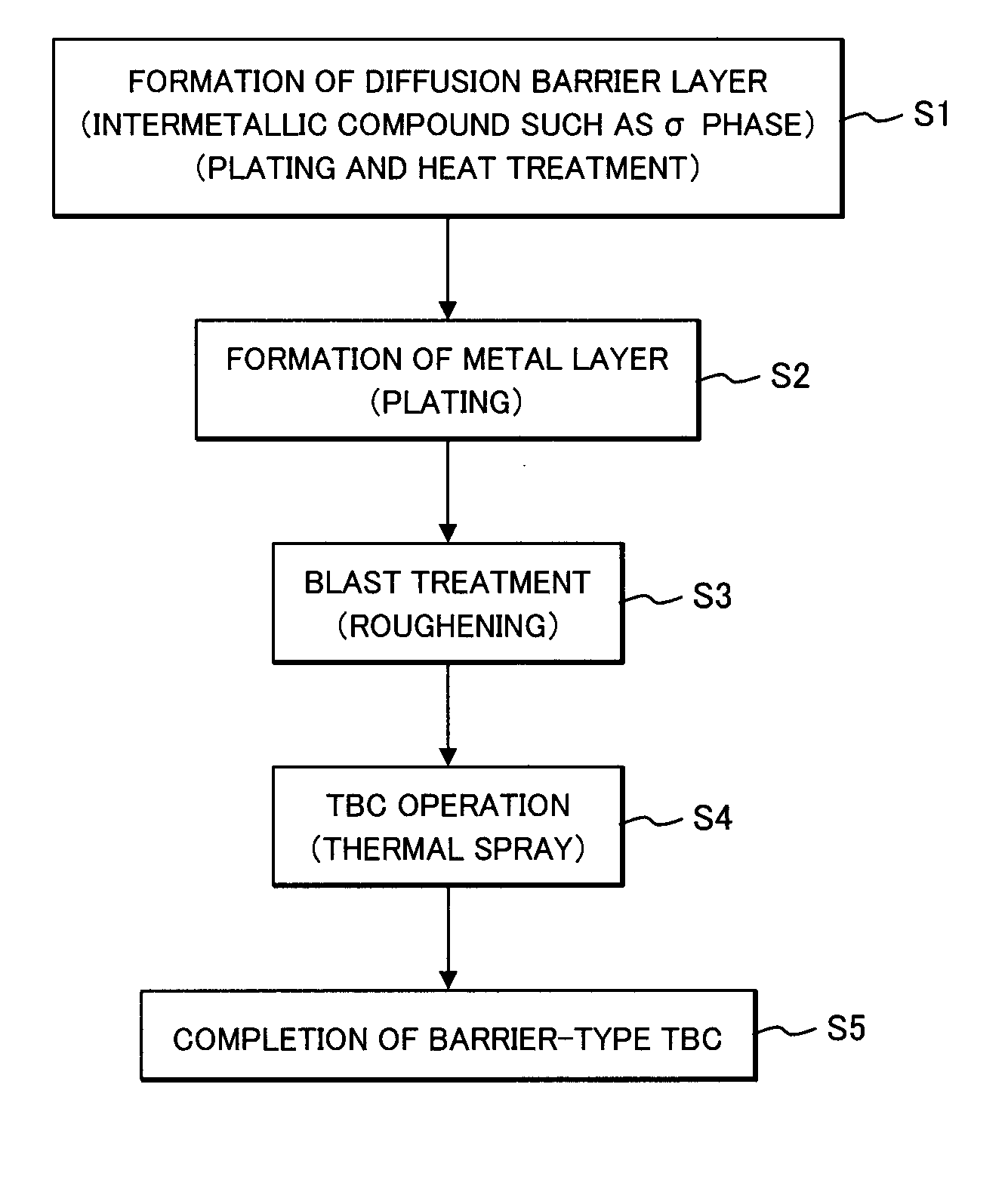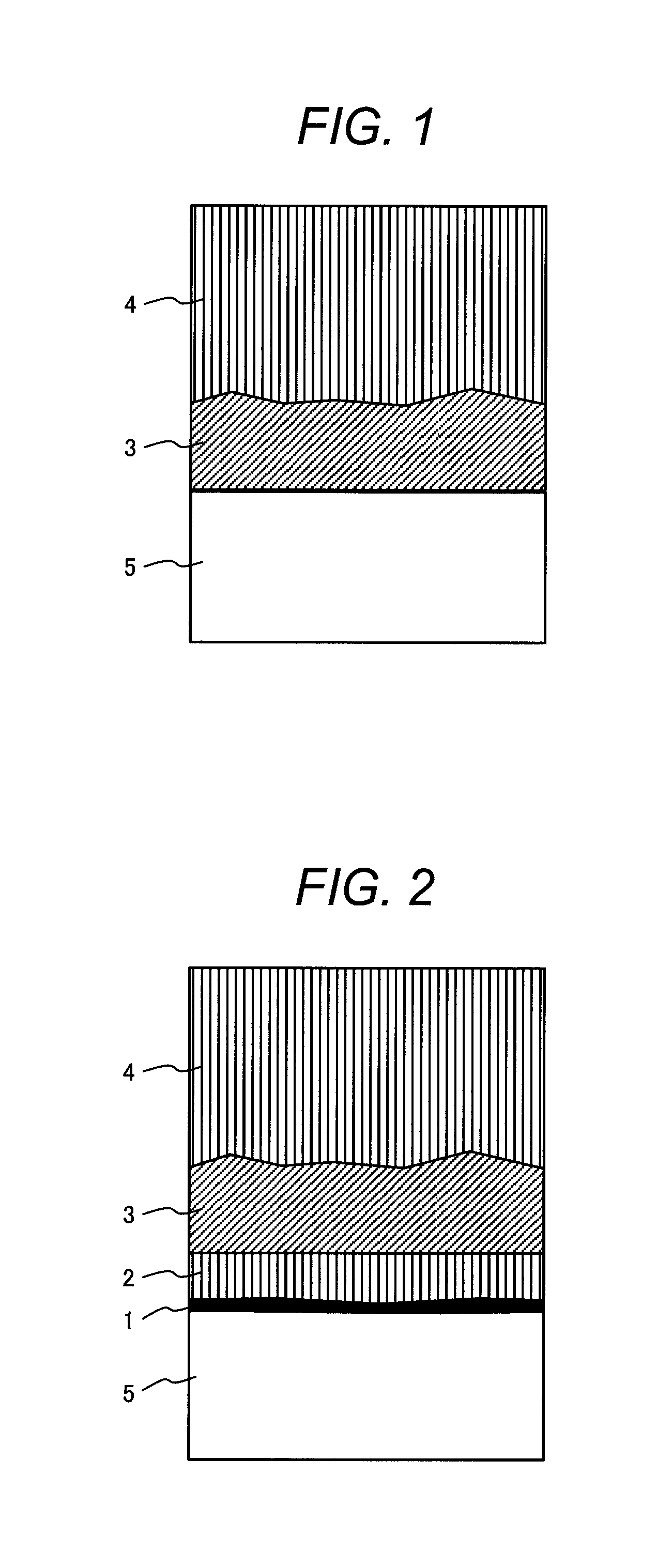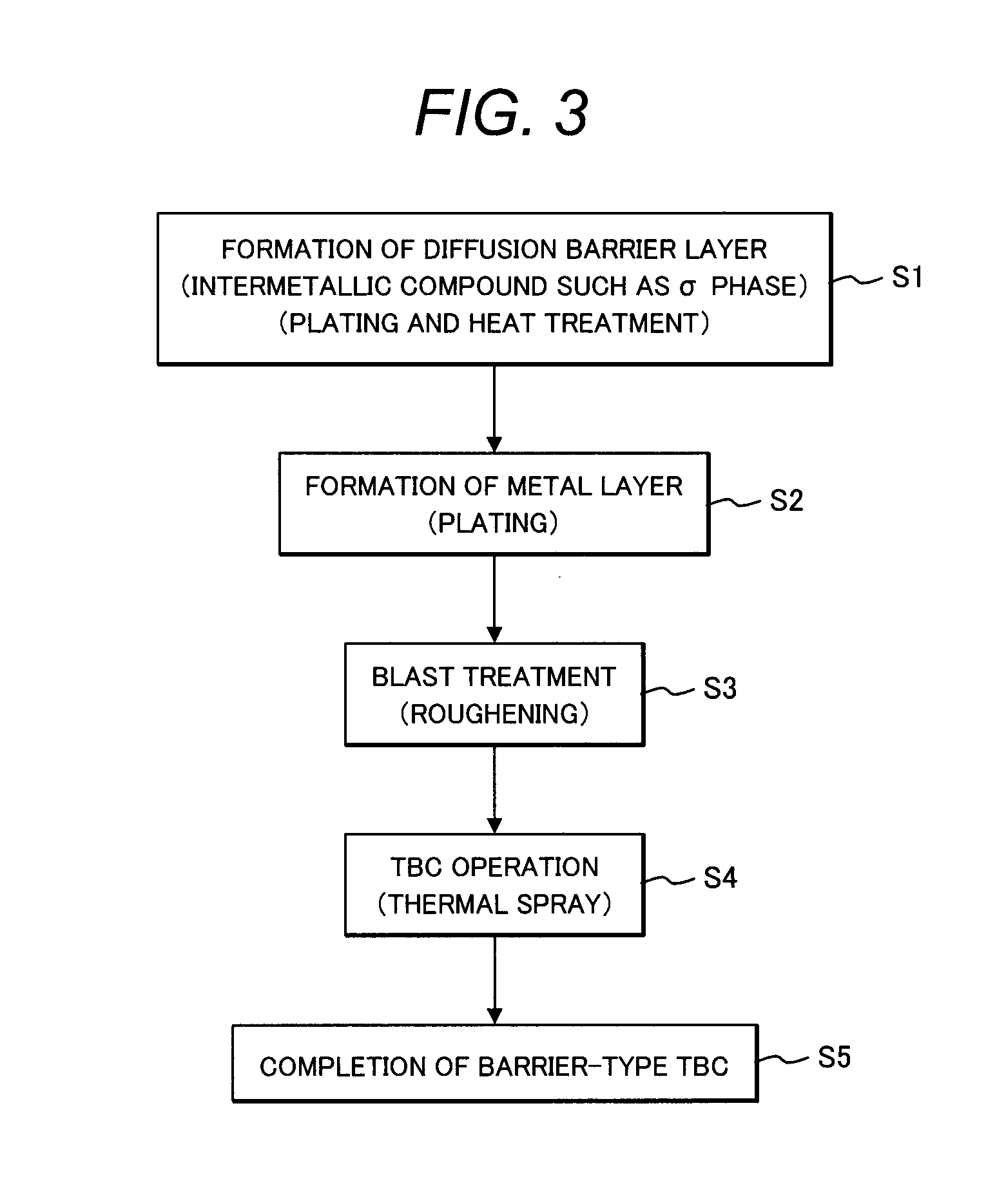Turbine Blade for Industrial Gas Turbine and Industrial Gas Turbine
- Summary
- Abstract
- Description
- Claims
- Application Information
AI Technical Summary
Benefits of technology
Problems solved by technology
Method used
Image
Examples
example 1
[0073]In the gas turbine member, a single-crystal heat-resistant alloy having a composition of Ni—7Cr—1Co—0.8Mo—8.8W—1.4Re—0.8Nb—8.9Ta—5.1Al—0.25Hf—0.07C—0.02B was casted into a rod, and the rod was mechanically processed into a diameter of one inch and a thickness of 3 mm, so that the substrate 5 was prepared. The composition of the alloy was within a particularly preferable composition range of the invention.
[0074]The surface of the substrate 5 was polished with #600 SiC waterproof abrasive paper, and then the substrate 5 was ultrasonically cleaned in acetone for degreasing. The diffusion barrier layer 1 was then deposited by an electroplating.
[0075]In this Example, electrolytic Ni plating was performed to precipitate a Ni layer on the surface of the substrate 5, and then the Ni layer was washed with distilled water, and then electrolytic Re plating was successively performed to precipitate a Re layer. Then, electrolytic Ni plating layers and electrolytic Re plating layers were al...
example 2
[0093]The same coating as that in the Example 1 was formed on a surface of a first stage turbine blade 23 formed of a single-crystal heat-resistant alloy having the same composition as that of the Example 1, the surface being to be exposed to combustion gas, so that a turbine blade for industrial gas turbine was produced.
[0094]FIG. 8 shows an outline of an industrial gas turbine including the turbine blade for industrial gas turbine of the Example 1.
[0095]In this drawing, the gas turbine includes a compressor 11, a combustor 12, a turbine unit 13 (including a turbine blade and a turbine nozzle), and an exhaust outlet 14.
[0096]FIG. 9 shows a portion A in FIG. 8 in an enlarged manner, which is a cross-sectional diagram showing a detail of the turbine unit 13 including the turbine blade and the turbine nozzle.
[0097]In this drawing, the turbine unit includes a first stage shroud 21, a second stage shroud 22, a first-stage turbine blade 23, a second-stage turbine blade 24, a disc 25, a f...
PUM
| Property | Measurement | Unit |
|---|---|---|
| Length | aaaaa | aaaaa |
| Fraction | aaaaa | aaaaa |
| Fraction | aaaaa | aaaaa |
Abstract
Description
Claims
Application Information
 Login to View More
Login to View More - R&D
- Intellectual Property
- Life Sciences
- Materials
- Tech Scout
- Unparalleled Data Quality
- Higher Quality Content
- 60% Fewer Hallucinations
Browse by: Latest US Patents, China's latest patents, Technical Efficacy Thesaurus, Application Domain, Technology Topic, Popular Technical Reports.
© 2025 PatSnap. All rights reserved.Legal|Privacy policy|Modern Slavery Act Transparency Statement|Sitemap|About US| Contact US: help@patsnap.com



